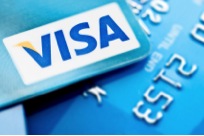With many US retailers and card issuers beginning to roll out EMV in an effort to fight fraud and increase payment security, industry experts warn that EMV shouldn’t be considered the end all solution.
Kate Larson, regulatory counsel for the Consumer Bankers Association, believes that in order to stay ahead of the game in terms of fraud prevention, card issuers should look beyond just using chip and PIN. While more secure than the current payment processing technology used in the United States, EMV still transmits the card number when a transaction is completed, making this information easily accessible for cyber criminals. Larson thinks that EMV should be paired with another security option: tokenization.
Instead of transmitting an entire card number after a purchase, the process of tokenization submits a one-time unique token. Cyber criminals are unable to access valuable payment information without specific decryption keys and because of this data breaches would no longer provide hackers with useful information. Tokenization can protect merchants in card present, card not present, and mobile situations.
The use of tokenization isn’t widespread at the moment, but it’s beginning to be noticed by card issuers and payment processors. Apple Pay, Apple’s mobile wallet application, utilizes tokenization and major credit card issuers like Visa and American Express are beginning to adopt the technology.
Online retailers should continue to take every precaution to protect themselves against fraud, including using services like EVS’s IdentiFraud solutions.
[Contributed by EVS Marketing]

